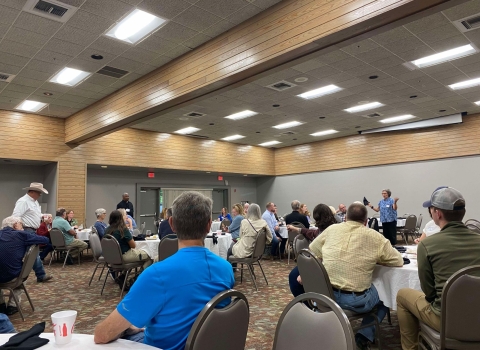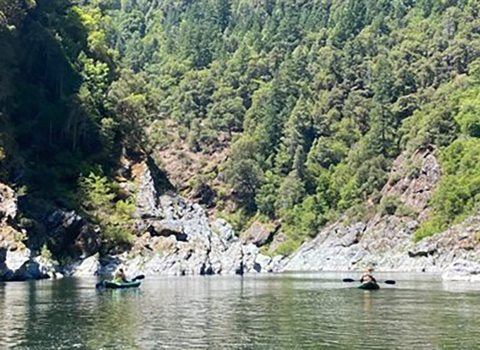"This is normal behavior for a young wild wolf of his age", said Wendy Brown, Field Coordinator for the project. " Long range dispersal movements is how young wolves learn the country, locate prey and potential mates, and if they are lucky, eventually set up a territory for themselves. This wolf made some long range movements in Arizona during December. Weve had difficulty locating him for about a month, and were concerned that his collar may have failed. However, his collar is working great and one of the biologists visually observed him. This information confirms that he was not involved in the two cattle depredations by his pack in New Mexico. Hes doing just what a wild wolf his age should do, and hes the first reintroduced wolf to explore such a large portion of the Gila National Forest."
Trapping operations continue for remaining members of the Gavilan Pack because of their involvement in five cattle depredations in Arizona and New Mexico. Last week, the field team captured the Gavilan pack alpha male and female and two of their pups. On Wednesday evening, February 2, a third pup was captured. Up to two 8-month old pups remain in the wild. The alpha male will be permanently removed from the wild.
Also, during recent efforts to relocate another pack before the breeding season to a location where elk is the primary prey base, alpha female #189 of the Mule Pack sustained a trap injury to a forefoot. Following veterinary treatment and observation, it was determined that amputation of the injured leg at the mid-humerous was necessary. She has been reunited with her mate and two pups at the Services Wolf Management Facility at Sevilleta National Wildlife Refuge in New Mexico. She appears to be getting along well. She has raised two healthy pups in the wild and was in good condition when captured. She will be observed carefully to evaluate her progress with the intent of releasing her with her pack.
"If we determine that she has a good chance of survival in the wild, we intend to release her again," said Brown. "Many wild wolves and coyotes sustain similar injuries and get along just fine. Additionally, her previous experience in the wild, her genetic relationship to other wolves, and her success as a mother all will contribute considerable value to the reintroduced population." The Service intends to re-release her mate and pups whether or not she can accompany them.
Public scoping began last week regarding the Services proposal to use up to four sites within the Gila Wilderness portion of the Gila National Forest in New Mexico for translocation of previously released wolves. The Mule and Pipestem packs are now being considered for translocation into the Gila National Forest. Public hearings to comment on the Environmental Assessment that will be prepared are scheduled for 7:00 to 9:00 p.m. at the Community Center of Reserve, New Mexico, on Wednesday March 1, and at Light Hall, Western New Mexico University in Silver City on Thursday, March 2, 2000.
At this time, eight Mexican gray wolves are free-ranging in the wild, and 11 others are current candidates for translocation. Female #482 will be re-released in Arizona this weekend as a new mate for the Campbell Blue male #166 whose mate was killed by a mountain lion last autumn. Of the 13 pups born in the wild or in forest acclimation pens during the spring of 1999, 10 survive. The normal expected survival rate for wolf pups is 50%.
Three new groups of wolves have been identified as high priority for release in 2000. Release dates and locations have not been finalized, however, the Service anticipates moving one of those groups to the Apache National Forest in the next several weeks.
The U.S. Fish and Wildlife Service is the principal Federal agency responsible for conserving, protecting, and enhancing fish, wildlife and plants and their habitats for the continuing benefit of the American people. The Service manages the 93-million-acre National Wildlife Refuge System comprised of more than 500 national wildlife refuges, thousands of small wetlands, and other special management areas. It also operates 66 national fish hatcheries, 64 fish and wildlife management assistance offices and 78 ecological services field stations. The agency enforces Federal wildlife laws, administers the Endangered Species Act, manages migratory bird populations, restores nationally significant fisheries, conserves and restores wildlife habitat such as wetlands, and helps foreign governments with their conservation efforts. It also oversees the Federal Aid program that distributes hundreds of millions of dollars in excise taxes on fishing and hunting equipment to state wildlife agencies.
Note: 2-8-00 -- a fourth Gavilan Pack pup was captured last weekend reducing the number of wild ranging wolves to seven.



